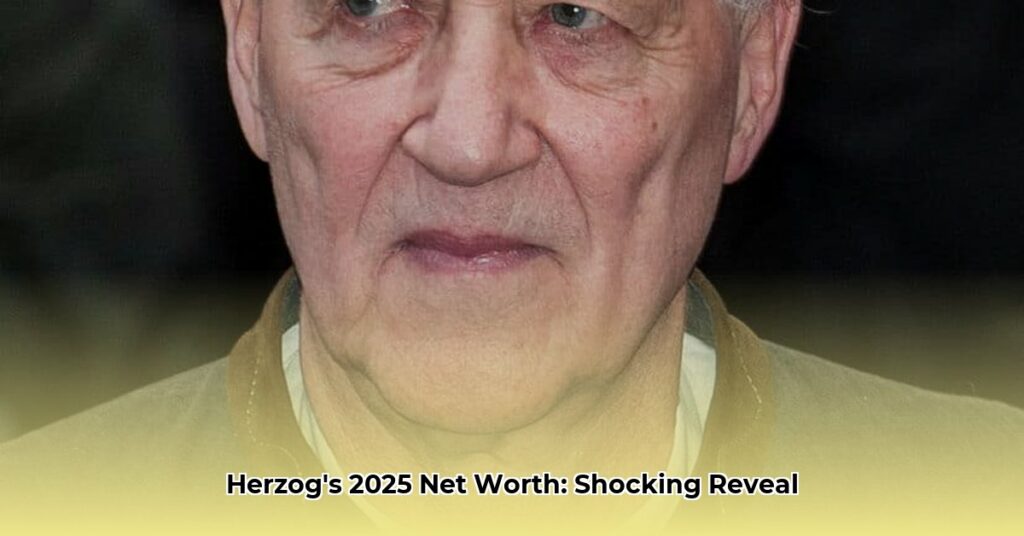Werner Herzog, the enigmatic German filmmaker, boasts a net worth estimated at $20 million as of 2025. But this figure, while substantial, likely only tells a fraction of the story. How does a director known for his uncompromising, often financially precarious projects, amass such wealth? This exploration delves into the fascinating interplay of art and commerce in Herzog’s career, examining how his unique cinematic vision has probably contributed to his financial success.
The Herzogian Landscape: A Life in Film
Born Werner Stipetić in Munich, Germany on September 5, 1942, Herzog’s early life was marked by post-war austerity, far removed from the world of cinema. This early exposure to hardship may have instilled the resilience and resourcefulness that characterize his filmmaking. He made his first film at 19, essentially self-taught, embodying the independent spirit that would become his trademark. A key figure in the New German Cinema movement, his early works, often shot in remote and challenging locations, established his reputation as a visionary. Films like Aguirre, the Wrath of God and Fitzcarraldo, while not always commercially successful, became legendary for their ambition and Herzog’s audacious filmmaking style.
Beyond the Lens: Diversifying the Herzog Brand
Herzog’s income streams extend far beyond directing. He is a prolific writer, penning screenplays, books like Of Walking in Ice and Conquest of the Useless, and even a biography of Kaspar Hauser. His distinctive, gravelly voice has also earned him narration and acting roles, from documentaries to appearances in The Simpsons and Star Wars. He has also directed operas, demonstrating a surprising versatility. Each of these endeavors, while difficult to quantify individually, likely contributes to his overall net worth.
The Unconventional Path to Success: A Herzogian Paradox
Herzog’s uncompromising filmmaking style, often described as both captivating and unsettling, suggests a paradox: his refusal to compromise his artistic vision may have been a key ingredient in his financial success. His films, far from typical Hollywood fare, resonate with a niche audience that appreciates his unique perspective. This dedicated following likely translates into a steady stream of income, supporting his continued artistic explorations.
Estimating the Herzog Fortune: A Calculated Speculation
Estimating a celebrity’s net worth is an imprecise science. While sources like Celebrity Net Worth place Herzog’s fortune at $20 million, this figure is based on available information and industry estimates. The true extent of his wealth, like the man himself, remains somewhat enigmatic. It’s plausible that unreported income streams, investments, and other ventures contribute to a more complex financial picture.
Addressing the $145 Million Myth
A persistent rumor places Herzog’s net worth at a staggering $145 million. This figure originated from a satirical article published by People With Money, later retracted. It’s a cautionary tale about the spread of misinformation online, highlighting the importance of relying on credible sources.
The Intangible Legacy: Beyond Monetary Value
While $20 million is a significant sum, it arguably pales in comparison to Herzog’s true legacy. His influence on cinema is immeasurable, inspiring generations of filmmakers to challenge conventions and embrace their own unique visions. This artistic contribution transcends any financial metric, solidifying his place as a true cinematic icon.
Herzog’s Early Years: Forging an Artistic Spirit
Herzog’s childhood in post-war Germany, devoid of many modern comforts, likely shaped his artistic sensibilities. Growing up in a remote Bavarian village, surrounded by nature and local folklore, may have fostered his fascination with the raw and unpredictable aspects of life, themes that permeate his films. His early act of stealing a 35mm camera highlights his resourcefulness and determination, setting the stage for a career defined by independent filmmaking.
A Cinematic Journey: Key Works and Artistic Evolution
Herzog’s filmography is a testament to his singular vision. From early works like Signs of Life to the epic Fitzcarraldo, his films often explore themes of obsession, madness, and the human struggle against nature. While not always commercially successful, these films garnered critical acclaim and solidified his reputation as a major figure in New German Cinema. His willingness to push boundaries, both artistically and logistically, has become a defining characteristic of his work.
The Operatic Herzog: Bridging Artistic Worlds
Herzog’s foray into opera directing might seem unexpected, but it aligns with his dramatic storytelling style. He has directed productions of Doktor Faust, Giovanna d’Arco, and I due Foscari, demonstrating a surprising adaptability. While the financial impact of these ventures is unclear, they add another layer to his artistic profile.
The Literary Herzog: Exploring the Written Word
Herzog’s literary output, including Of Walking in Ice and Conquest of the Useless, provides further insight into his creative process and personal experiences. These works, while difficult to quantify financially, offer a valuable complement to his filmmaking career, enriching his overall artistic legacy.
Ongoing Research: The Elusive Economics of Art
Research into the financial dynamics of the art world is ongoing. While sales figures and box office receipts offer some clues, factors like reputation, critical acclaim, and cultural impact also contribute to an artist’s financial standing. In Herzog’s case, these intangible factors likely play a significant role, potentially opening doors to new opportunities and collaborations. The precise financial contributions of his diverse ventures remain an intriguing area of study.



